Which of the following actions allows for repolarization of a neuron?
A. The inhibition of sodium and potassium pumps, stopping all ion movement into the neuron
B. The opening of sodium channels, allowing sodium to enter the neuron
C. The closing of both sodium and potassium channels to restrict movement of ions into and out of the neuron
D. The opening of potassium channels allowing potassium to leave the neuron
D. The opening of potassium channels allowing potassium to leave the neuron
The correct answer is d. The opening of potassium channels allowing potassium to leave the neuron. Repolarization of a neuron occurs after an action potential, when the neuron's membrane potential returns to its resting state. This is achieved by the opening of potassium channels, which allows potassium ions to flow out of the neuron. This movement of positively charged ions out of the neuron helps to restore the negative membrane potential.
A. The inhibition of sodium and potassium pumps would not allow for repolarization because these pumps are necessary for maintaining the resting membrane potential.
B. The opening of sodium channels would cause depolarization, not repolarization.
C. The closing of both sodium and potassium channels would restrict ion movement, but it would not allow for repolarization.
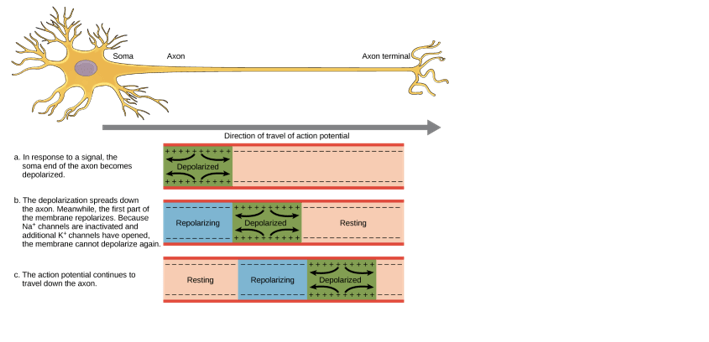
Therefore, the Correct Answer is D.
More Questions on TEAS 7 Science
-
Q #1: If a mother's____________ cell contains mutated DNA, this mutation can be passed to her offspring. Which of the following options correctly completes the sentence above?
A. somatic
B. white blood
C. germ.
D. Stem
Answer Explanation
The correct answer is c. germ. If a mother's germ cell contains mutated DNA, this mutation can be passed to her offspring. Germ cells are the reproductive cells (eggs in females and sperm in males) that carry genetic information from one generation to the next.
a. Somatic cells are all the other cells in the body that are not germ cells. Mutations in somatic cells are not passed on to offspring.
b.White blood cells are a type of somatic cell that plays a role in the immune system.
d. Stem cells are undifferentiated cells that have the ability to develop into different types of cells in the
body.

-
Q #2: A patient goes to the doctor with a cold and sore throat and asks for antibiotics. The doctor refuses to prescribe antibiotics to the patient because the illness is caused by which of the following pathogens?
A. Fungus
B. Virus
C. Protist
D. Bacteria
Answer Explanation
The doctor refuses to prescribe antibiotics to the patient because the illness is caused by a virus. The common cold is a viral infection of the upper respiratory tract. Antibiotics are not effective against viral infections and are only used to treat bacterial infections.
The other options are not correct because they do not accurately describe the cause of the common cold and sore throat. Fungus, protist, and bacteria are not the pathogens responsible for causing the common cold.
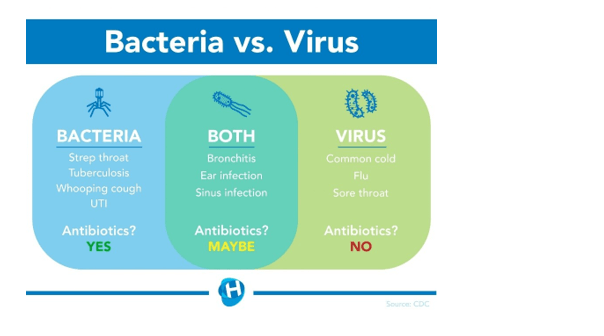
-
Q #3: Which of the following occurs in an oxidation reaction?
A. Removal of oxygen
B. Addition of carbon
C. Addition of neutrons
D. Removal of electrons
Answer Explanation
An oxidation reaction occurs when there is a removal of electrons ¹. Oxidation is the loss of electrons during a reaction by a molecule, atom or ion ¹. When oxidation occurs, the oxidation state of the chemical species increases ¹.
The other options are not correct because they do not accurately describe what occurs in an oxidation reaction. Removal of oxygen, addition of carbon, and addition of neutrons are not processes that occur in an oxidation reaction.
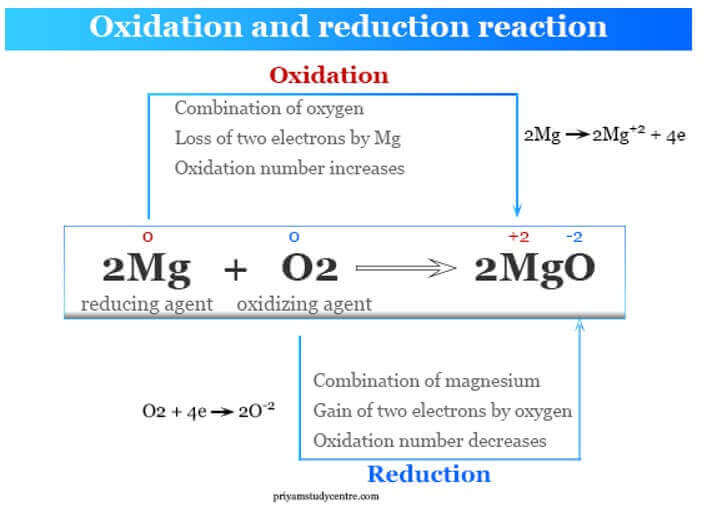
-
Q #4: Which of the following is an efferent neuron that is responsible for releasing a neurotransmiter that stimulates a muscle cell to contract?
A. Motor neuron
B. Interneuron
C. Sensory neuron
D. Neuroglia
Answer Explanation
An efferent neuron that is responsible for releasing a neurotransmitter that stimulates a muscle cell to contract is a motor neuron ². Motor neurons carry signals from the brain to the peripheral nervous system in order to initiate an action. The neurotransmitter acetylcholine (ACh) is released by motor neurons at the neuromuscular junction in skeletal muscle, causing the muscle to contract ³.
The other options are incorrect because they do not accurately describe the type of neuron responsible for releasing a neurotransmitter that stimulates a muscle cell to contract. Interneurons are found within the central nervous system and facilitate communication between sensory and motor neurons. Sensory neurons carry information from sensory receptors to the central nervous system. Neuroglia are support cells for neurons and do not transmit nerve impulses.

-
Q #5: Which of the following organs filters excess solutes from the blood?
A. Stomach
B. Spleen
C. Kidney
D. Gallbladder
Answer Explanation
The organ that filters excess solutes from the blood is the kidney ¹. The kidneys are a pair of bean-shaped organs located on either side of the spine, just below the rib cage ². They are responsible for filtering waste products and excess fluid from the blood and excreting them in the form of urine ².
The other options are not correct because they do not accurately describe the organ that filters excess solutes from the blood. The stomach, spleen, and gallbladder do not filter excess solutes from the blood.

-
Q #6: Which of the following correctly orders structures from simple to complex?
A. Cells, tissues, atoms, organs
B. Atoms, organs, tissues, cells
C. Atoms, cells, tissues, organs
D. Organs, tissues, cells, atoms
Answer Explanation
The correct answer is c. Atoms, cells, tissues, organs. This is the correct order of structures from simple to complex. Atoms are the smallest and simplest units of mater. Cells are made up of atoms and are the basic units of life.
Tissues are groups of similar cells that work together to perform a specific function. Organs are made up of different types of tissues and perform more complex functions.
A. Cells, tissues, atoms, organs is not the correct order from simple to complex.
B. Atoms, organs, tissues, cells is not the correct order from simple to complex.
D. Organs, tissues, cells, atoms is not the correct order from simple to complex.
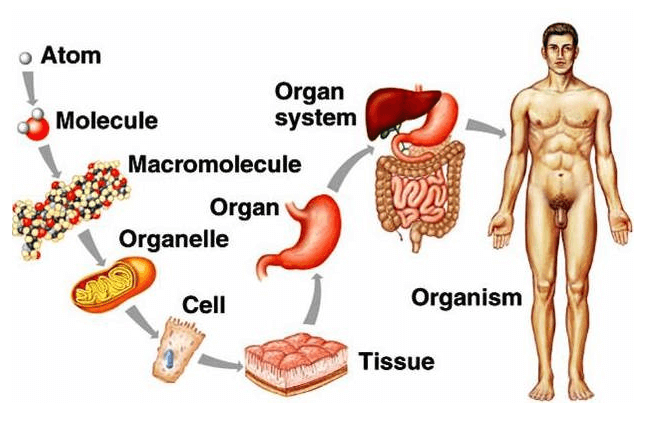
-
Q #7: Parasitic worm infestation is hypothesized to be damaging to the host. However, scientists have recently discovered that worm infestation can relieve the effects of certain autoimmune disorders. In which of the following ways should the hypothesis be modified, given the new findings?
A. Worm infestation prevents the body from immune malfunction.
B. Worm infestation reduces the severity of certain autoimmune disorders.
C. Lack of worm infestations is the cause of some autoimmune disorders.
D. Worm infestations exacerbate the body's immune reaction.
Answer Explanation
Given the new findings that worm infestation can relieve the effects of certain autoimmune disorders, the hypothesis should be modified to state that worm infestation reduces the severity of certain autoimmune disorders.
This option best reflects the new information and suggests a potential benefit of worm infestation in relation to autoimmune disorders. The other options do not accurately reflect the new findings and do not provide a clear modification to the hypothesis.
-
Q #8: To accurately measure the density of a series of small irregular solids made of plastic, wood, fibreglass, and glass, a student will need which of the following laboratory tools?
A. Graduated cylinder, water, weighing balance
B. Graduated cylinder, spectrophotometer, water
C. Graduated beaker, metric ruler, water
D. Weighing balance, Bunsen burner, metric ruler
Answer Explanation
To accurately measure the density of a series of small irregular solids made of plastic, wood, fiberglass, and glass, a student will need a graduated cylinder, water, and a weighing balance. The student can use the water displacement method to determine the volume of each solid by measuring the volume of water displaced when the solid is submerged in a graduated cylinder filled with water. The mass of each solid can be measured using a weighing balance. The density can then be calculated by dividing the mass by the volume.
The other options are not correct because they do not provide the necessary tools to accurately measure the density of the solids. A spectrophotometer is used to measure light absorption and is not necessary for measuring density. A graduated beaker is less accurate than a graduated cylinder for measuring volume. A Bunsen burner is used for heating and is not necessary for measuring density.
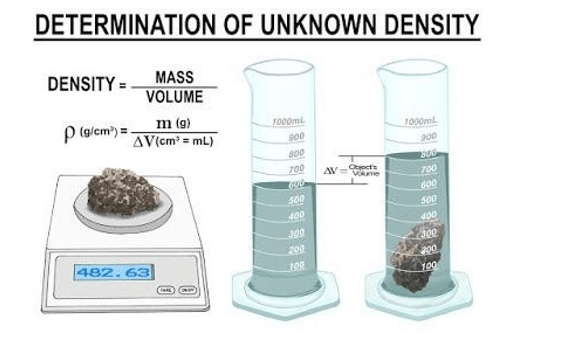
-
Q #9: Which of the following actions allows for repolarization of a neuron?
A. The inhibition of sodium and potassium pumps, stopping all ion movement into the neuron
B. The opening of sodium channels, allowing sodium to enter the neuron
C. The closing of both sodium and potassium channels to restrict movement of ions into and out of the neuron
D. The opening of potassium channels allowing potassium to leave the neuron
Answer Explanation
D. The opening of potassium channels allowing potassium to leave the neuron
The correct answer is d. The opening of potassium channels allowing potassium to leave the neuron. Repolarization of a neuron occurs after an action potential, when the neuron's membrane potential returns to its resting state. This is achieved by the opening of potassium channels, which allows potassium ions to flow out of the neuron. This movement of positively charged ions out of the neuron helps to restore the negative membrane potential.
A. The inhibition of sodium and potassium pumps would not allow for repolarization because these pumps are necessary for maintaining the resting membrane potential.
B. The opening of sodium channels would cause depolarization, not repolarization.
C. The closing of both sodium and potassium channels would restrict ion movement, but it would not allow for repolarization.

-
Q #10: A study found two processes, Process A and Process B, to be correlated. Which of the following is true for these processes?
A. The study indicates that Process A causes Process B.
B. The study cannot indicate whether Process A and B have a positive relationship.
C. The study does not indicate a causal relationship between the processes.
D. The study cannot indicate whether Process A and B have a negative relationship.
Answer Explanation
The correct answer is c.
The study does not indicate a causal relationship between the processes. A correlation between two processes means that there is a statistical relationship between them, but it does not necessarily imply causation. In other words, just because two processes are correlated does not mean that one causes the other.
b.The study does not indicate that Process A causes Process B.
b.The study can indicate whether Process A and B have a positive relationship if the correlation is positive.
d. The study can indicate whether Process A and B have a negative relationship if the correlation is negative.
Free Access on TEAS 7 Exams and Study Notes
- Access to all TEAS 7 Exams
- Performance Tracking and Analysis
- Well Documented and Explained Questions and Answers
- 2000+ Questions and Correct Answers: Answers Well Explained
- Libary of Detailed StudyNotes
- Topical Questions and Answers on Examinable topics
TEAS 7 Exams (Q&A)
TEAS 7 Study Notes
TEAS 7 Topical Tests

TEAS 7 Study Guides
Quick Links
Refer a Friend
Refer a friend and claim free unlimited access

© 2024 ExamGates Made with by ExamGates
